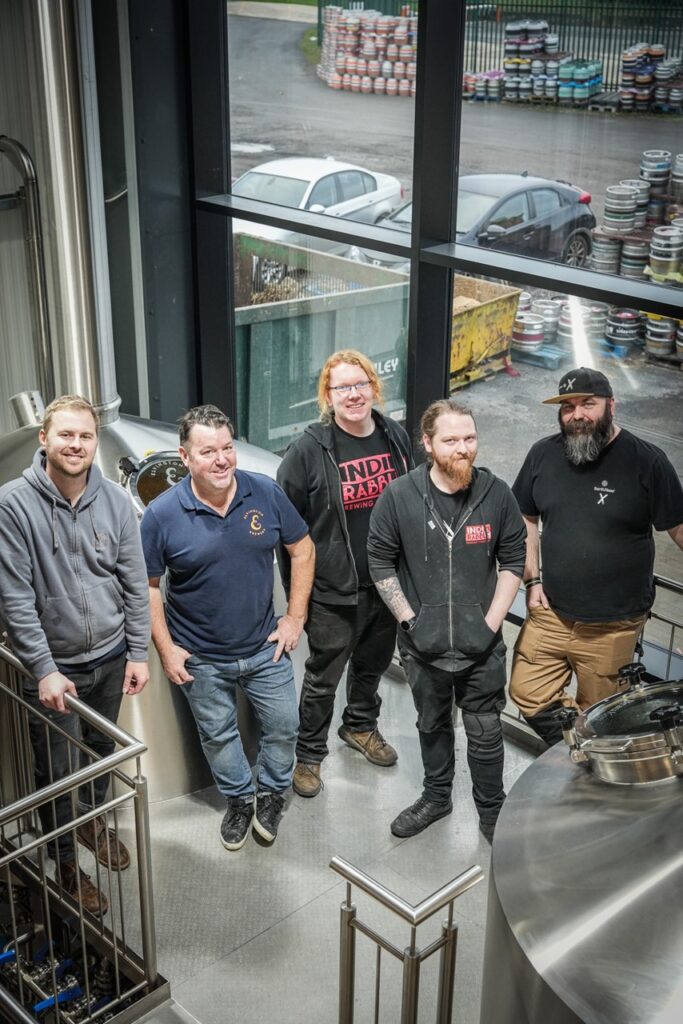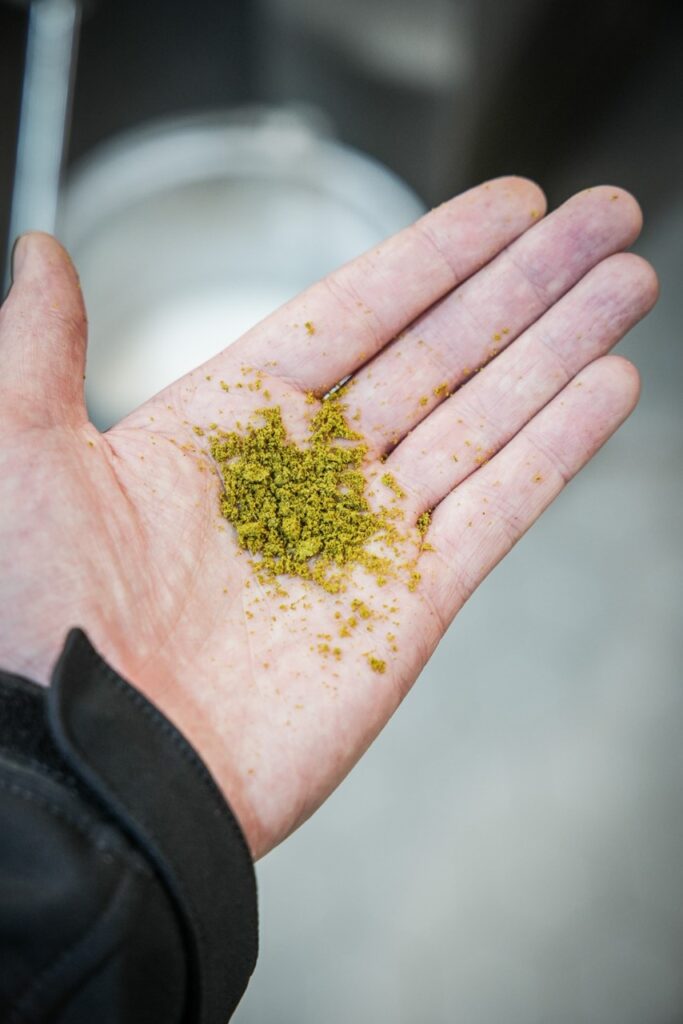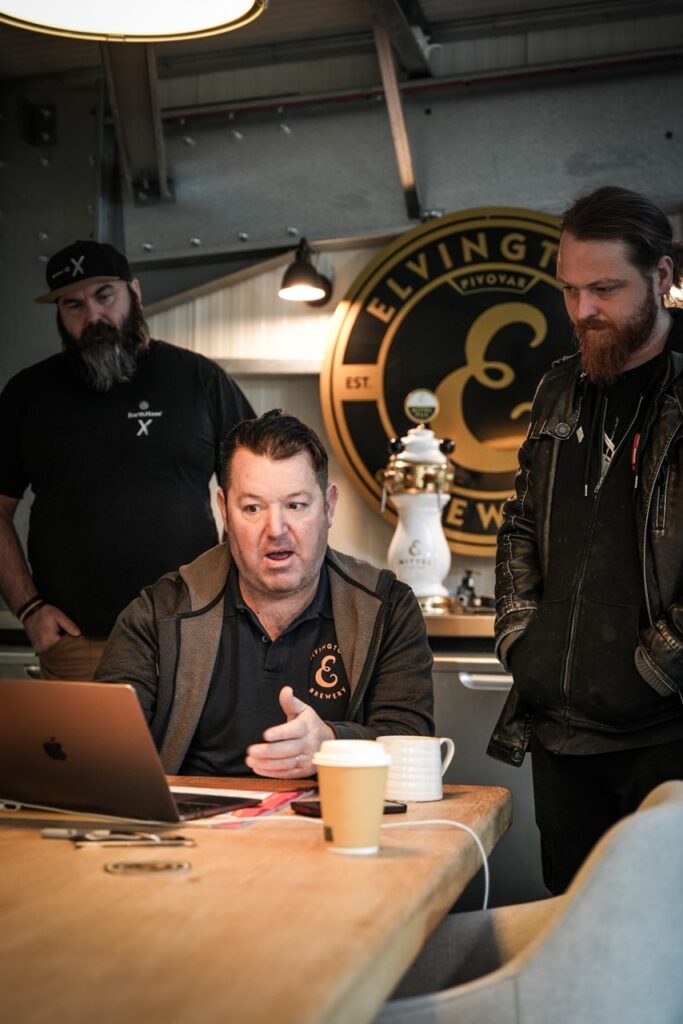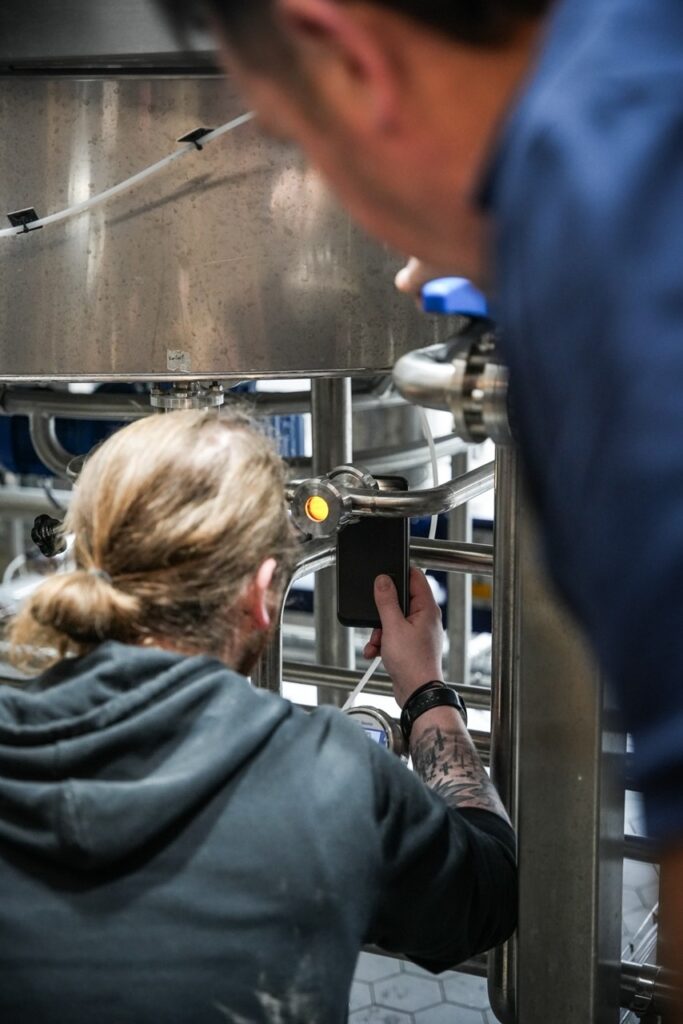
📍 Elvington Brewery, York.

Not many beer writers in my sphere seem to sit down and really take some time to think about Lager.
The stereotype lazy explanation for that is probably that lager is boring, that there’s no hype, that there’s no real sales opportunities there and that Macro owns that market, so let’s instead worry about where we can win ground – the big hazies, the pastry stouts and sours and the like.
And that might be a very fair rationale and as far as we need to go with it…

But I also think it’s fair to highlight something else. That simply not enough craft breweries can execute lager well. That macro beer. The likes of Heineken, are often better drinks. Brewing such a simple beer is excruciatingly difficult. There’s nowhere to hide. Every yeast ester, every enzyme on the malt – can have a significant effect on the resultant beer. Adding distracting profile to a beer that should be simple.
With lager, less is very often – definitely more.
Let’s also get one thing straight. Craft Beer needs Lager as a category. It’s what the vast majority of drinkers in the UK go for. For one reason or another, it dominates. We can get bogged down in the minutia of why Macro beer is where it is, how their boots stamp down on us all – or we can leverage people’s taste for lager. Learn everything we can from more commercial brewing techniques. Improve the quality of craft alternatives – and have a new conversion opportunity for the 75% or so of British beer drinkers that don’t and won’t care about anything the craft bubbles does or says.
Which is why I was so excited to get up and see Elvington Brewery, just outside of York.
Because that’s what they’re doing.

Elvington Brewery is a part of the Pivovar Group. The wholesaler that brings in the largest amount of Veltins of any UK importer.
In fact, as I was on site, I saw a full 13.5 Tonne truck delivery of the stuff loaded into their Warehouse, pallet by pallet.
And their relatively new mission is to replace at least some of that import with their own beer.

I’ve been to hundreds of UK breweries and brewed beer with many of the best UK Craft Breweries. That’s not a brag, it’s a narrative point. Because at least for me, with a mindset borne of nearly a decade in craft beer [Read: Tired. Quite tired indeed] – none of them were as exciting to arrive into for me in recent times as Elvington.
Their German built Braukon brewhouse is simply stunning. If you’re into that sort of thing. Every part of it is designed for maximum efficiency, and even more importantly for a beer that customers expect to taste the same batch after batch: Maximum consistency.

It’s a beer production facility so anal that at every step in the process, an incredibly loud ‘everything is ok’ alarm must be cancelled. Because everything IS ok, except potentially the production brewer – who the kit needs to remind to up their game. To stay on track at all times. Because, stereotypes aside, efficiency is everything.
And we were getting to brew on it. Well, somewhat. Elvington stayed in charge of the buttons for our collab. A collab with a purpose: Arranged by Barth Haas X, our hop merchant, our mission was to use one of their newest to market hops, Tango, in a new lager. To give Tango a platform. We’ll do our best like…
We then are to brew a lager that as I say, needs to fit the mass market brief. With Drinkability, session length and approachability the prime criteria. And um, with a hop that we’ve found to be very, very dominant in our hazy pales. No pressure then.

We’ve brewed several beers with Tango and it really takes a starring role in Mantle – our core new England pale ale. A citrus, pithy candied orange aroma dominates that brew – but we’re told by Barth Haas X they also expect grassy, floral aroma akin to Saaz in a lager.
The two-faced nature of this hop is something I’m inclined to believe our hop merchant on then, even if not my experience to date. Alex and I were certainly excited to try. As we’ve been so fully sold on this wonderful hop: Bred in the Hallertau region and spliced with Cascade, this hybrid hop allegedly can bring a little of both of it’s parents to the table.
Time will tell which outfit it wears to our lager party I guess…
So, with balance in mind, and fear of the power of this hop evident in our thinking – this was the truest of collabs. It started with some 40 years of combined brewing experience squinting at a laptop to formulate the recipe.

Our Alex has quite some lager brewing experience, working with Windsor and Eton on Czech inspired Republika back in the day, and more recently brewing batches of Thornbridge’s Lukas: Another beer with striking similarities to the Veltins that surrounded the brewery during our collab.
Jamie Hawksworth, Elvington’s co-owner and head brewer is a Czech trained, German inspired brewmaster and now master of ceremonies on this amazing Braukon kit. He’s brewed with Sierra Nevada. In Czech and all across Europe. And now – for some reason – with us!
But all the talk of Czech heritage aside, I believe it’s an Ayinger (don’t quote me, we started drinking at 9:30 in the morning) lager yeast used at Elvington. A good thing I think it must be said – as leaning into the German side of lager production is personally quite the relief – owing to the thankful lack of Diacetyl the resultant beer will contain. If you don’t know what Diacetyl is, good for you. But I do – and for me it’s the most egregious of off flavours in beer. Rancid chemical oily butterscotch. Always a fault in my opinion – even if the brewer says different. I appreciate the Bohemian propensity for the stuff, but will never enjoy the beers I’m afraid. Show me a sidepoured tank beer sourced Pilsner Urquell and you show me sadness. I know I know… But let’s move on.
On the other hand, Jamie’s take forward would for me be all the best bits of proper lager production.

The Braukon kit is clever. Their semi-automated brewkit allows for quite a few things we can’t do. Decoction mashing through a closed loop system with steam jackets the source of the heat, likely aide in the slightly sweet, rich biscuit and caramel flavours in the finished product. Something we can’t do back at Indie as our Copper is electric element heated and would scorch the mash. Still, there’s plenty we can learn even for our far more basic kit, and liquor temperature step raises through iteratively increased strike water temperature is our workaround of sorts…
But yes, sutble beer – subtle touch. Keep it simple. Do it well. Our input to this collab then was one of a steady hand. Knowing Tango can punch and not wanting it to be a one punch brew. Alex scaled back the hop additions, and time will tell where we land – but this is a beer I’m super excited to try.

Decoction brewing isn’t Elvington’s only party trick. They’ve plenty more in their proverbial hat. Post brew, each beer is lagered in horizontal tanks, and Krausening is used to kick off fermentation in the second brew of an eventually blended batch.
This certainly gains consistency batch to batch – but it also answered another question I had.
As their lager is about the most champagne like experience of lager I think I’ve ever had: Tight, tiny bubbles of co2 give a zing to this beer but with an important difference to the majority of UK brewed craft lager I’ve had: The overall co2 volume level – being at just 2.2 volumes or so, is actually pretty low.

It’s quite remarkable to have a beer with such effervescence that also isn’t remotely bloating. A lot of people say they get full on lager, or in defense of Ale will insist on ‘fizziness’ being a downside of lager over cask. But genuinely, many casks will go to market with a higher service carb level than that.
This lager just hits different.

A highlight of our day brewing there, was access to their Fest Marzen. Their Weihnachtsbier (or Christmas Beer) was everything stated, plus an incredibly pleasing kick of dark treacle, from a beer that was somehow so zingy and fluffy. It is probably the best Marzen I’ve ever had.
A statement which I’ve backed. By driving back post hangover the next day and buying everything they had left to stick in the car for the way home… Available soon at A Hoppy Place near you.

So sure, we had a lovely time, we drunk a load of brilliant lager. Hopefully we brewed one that’ll be good too. Alex and I learnt loads. But this isn’t just a fluff piece. I have a point to make.
A Hoppy Place makes nearly 50% of it’s drink in sales volume from just 2 beers: Lost and Grounded Helles, and Mad Squirrel Hopfest. Two circa 4% beers that target approachability above anything else. They’re also available at a great price.
But I also know just how hard it is to get a craft lager into a bar on draft. Trust me – Indie Rabble has Frozen Moon and even though it’s a ‘good’ lager – fault free in terms of brewing process and certainly not a whiff of any common off flavour – it can still be so much better. And I need it to improve to the point stocking it is a no brainer. In the sea of Craft Lagers and their cheaper Macro Alternatives – I need Frozen Moon to Sing it’s Siren Song. And as a brewery we’re hyper critical of what we do, and aim to use each and every one of these collabs to learn and to improve our product.
The lager market is so difficult to get into. You need to focus on cost. You need to do everything consistently. You need to make simple exceptional. Getting that one top tier lager is not about doing something different every time. It’s the antithesis of the double new England, pastry stout world. It’s about minute, continuous improvement, on process focus, on batch traceability, on the ability to react and counter changes in input ingredient profiles. And ideally to do it all without the customer noticing.

(this piece was genuinely not sponsored by Veltins!)
I remain steadfast though. Craft Beer does and must continue to have space for both. More of the conversation should about both.
Because the more we seek the exciting – the hype – the once a year 5 minute sellout special with mad branding that makes no sense to anyone outside of our bubble – the more we run the risk of closing the gate of our niche to the majority.
I think all the very best breweries, the ones that’ll see our current market pinch through, are able to do both, and should treat both with equal importance. Do remarkable beers. But focus on doing simple beers remarkably well. Because then you’ve half a chance of breaking into the peripheral vision of the Lager drinker market in wider terms. Where consistency, and clean – precise brewing is everything. Even if the drinker doesn’t know it. And breaking into the lager market really is something you should want to do, because my Christ Pivovar sell a lot of Veltins…
By continuing to browse you also accept our cookie and privacy policies